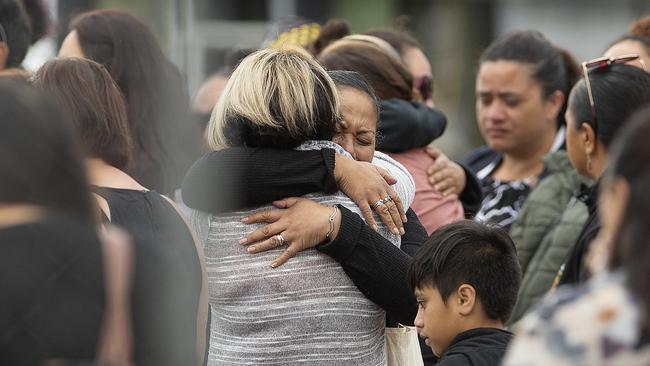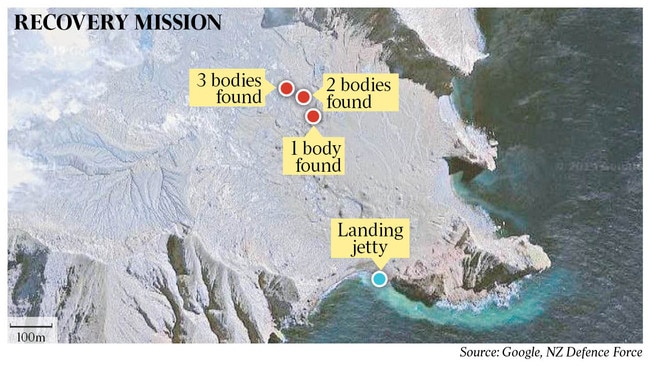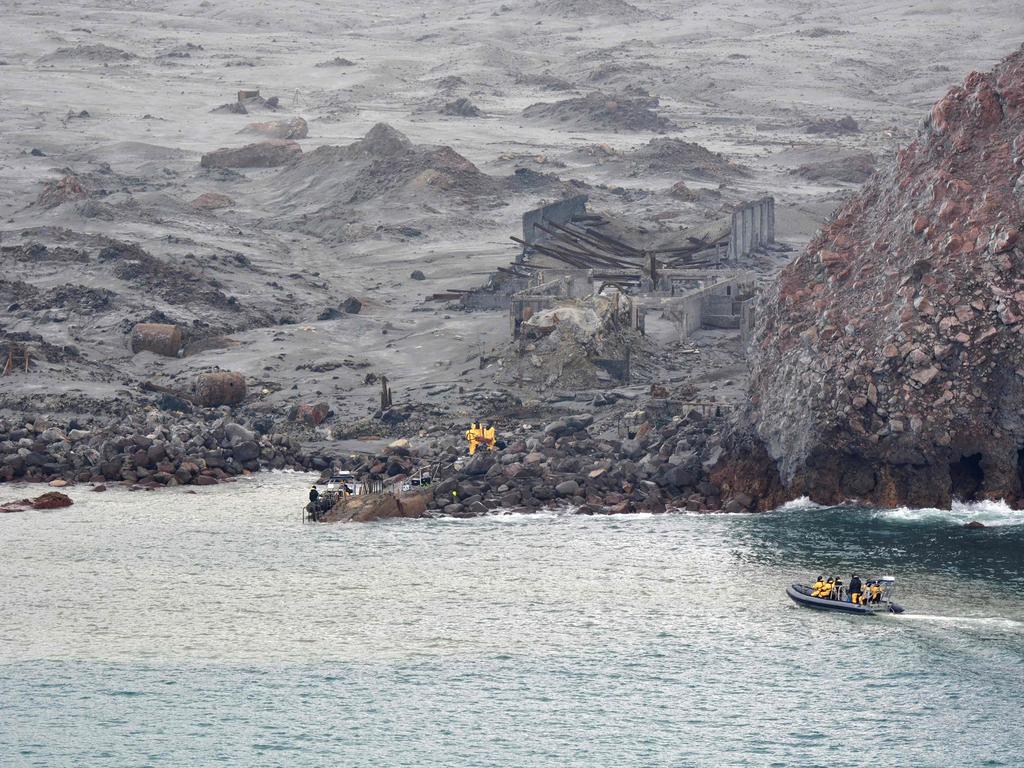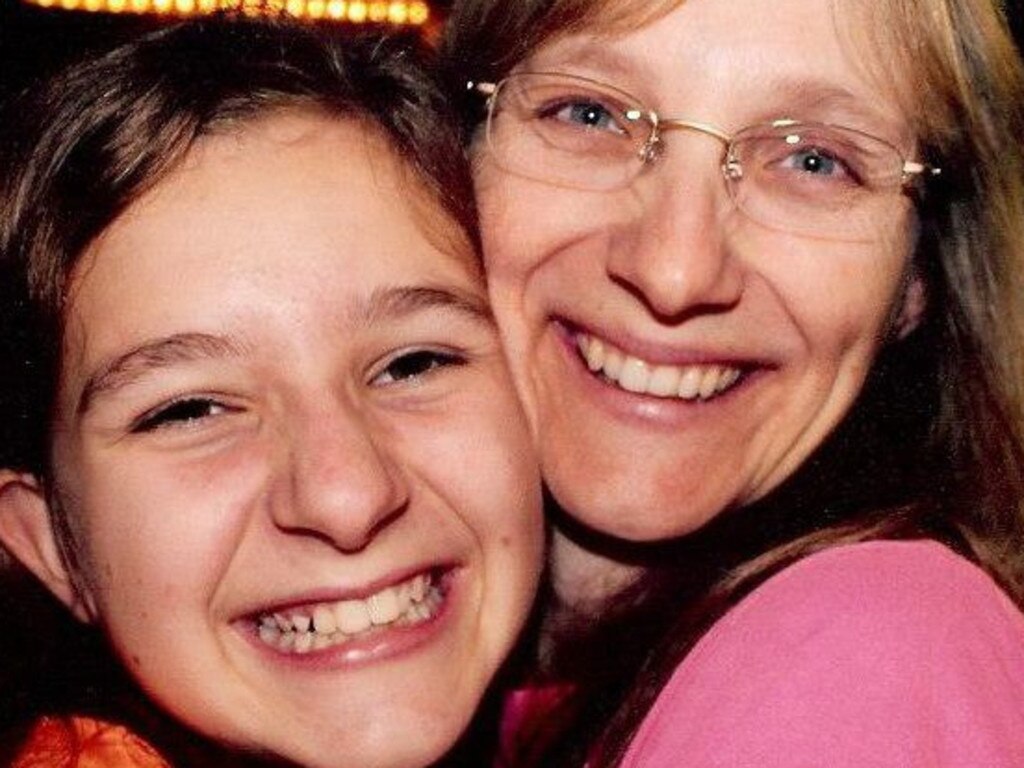NZ volcano tragedy: finding lost souls in a volcanic wasteland
For four hours a crack team of Kiwi soldiers carried the weight of two nations on their shoulders.

For four hours a crack team of Kiwi soldiers carried the weight of two nations on their shoulders.
The six men and two women — a mixture of medicos and bomb-disposal experts — wore yellow protective suits as they looked for the bodies of New Zealanders and Australians lying beneath the ash on an island smothered in toxic gas.
As the recovery teams risked their lives on an active volcano, the families of the dead waited on shore at Whakatane, hoping for the news that their loved ones had been found.
Six of the eight killed in Monday’s eruption were recovered and returned to shore. Two would be left on the island, one thought to be in the ocean nearby, the other not found.
Before first light, the families of the missing set out to the island on a boat and later shared their grief through a traditional Maori blessing, hugs and songs.
Mark Inman, whose brother Hayden died on the island, said those grieving had become united. “It was one of those moments when you get as close as you can to where they were,’’ he said. “It was truly special, we’re all one big family: Kiwis, Australians, it didn’t matter.”
Given the high chance of another eruption from the smoking volcano, the perilous military operation to recover the bodies was considered a success. But it would be a day of overwhelmingly mixed emotions. After initial reports that all the Australians had been recovered, it’s now thought that one Australian may be among those still missing. When the bodies were brought back to the mainland, their families were unable to properly identify their loved ones.
New Zealand’s Minister for Maori Crown Relations, Kelvin Davis, said the families had spent time at Whakatane airport sitting beside the coffins holding the bodies. “There was a sense of calmness, a sense of peace but there was that overriding sense of grief as well,” he said. “We had karakia (prayer), obviously, a brief mihi (tribute), and then there was the time for the whanau (extended family) just to be sitting among the coffins and just spending time there with their loved ones.
“Obviously they didn’t know which was their particular whanau member. But it was just an opportunity, as I said, regardless of whether we’re from Australia or New Zealand or wherever, at that moment we’re one whanau and will mourn everybody as if they’re our own.”

Coffs Harbour mother Karen Griffith lay flowers at the makeshift memorial in Whakatane. Her son Jason had died in hospital from his burns.
Foreign Minister Marise Payne was reported on early Friday as saying that the six bodies recovered from the island were all Australians. But New Zealand media outlet Stuff reported that the body of a New Zealand tour guide, Tipene Maagni, was among those recovered according to his family, and New Zealand Prime Minister Jacinda Ardern said reports that all of those recovered were Australian were not correct.
New Zealand Police Commissioner Mike Bush said authorities would continue to search for the bodies of two other people that could not be found on the island. Divers on Friday were deployed near where one body was seen in the water on Tuesday.
“Unfortunately, there remains two more people that we need to find so that we can also return them,” Mr Bush said. “So this operation will continue.”

Defence Force senior officer Ryan McKinstry said he was proud of the work done by the team of eight, made up of members of the explosive ordnance disposal squadron and army medics, who landed on the island early on Friday. They launched from HMNZS Wellington and landed at a jetty before heading into the crater amid warnings of a possible eruption and dangerous gases. They spent four painstaking hours on the island before completing their mission and returning the bodies to the Wellington.
“The conditions and terrain on the island were difficult and, given the potential for another eruption, we had planned on how we could recover the six identified deceased while minimising our time on the island due to the assessed risks in carrying out this operation,” Colonel McKinstry said.
He said the team wore heavy-duty personal protection equipment and a back-up unit was also ready to be deployed.

He said the team members were trained for “unique” operations, but the things they saw on the island would mean they would need a debrief.
The bodies were taken to Auckland but formal identification will take time. “Australia has been consistent in saying that proper identification is essential before assessments or statements about who victims are or what their nationality is can be made,” a DFAT spokesman said.







To join the conversation, please log in. Don't have an account? Register
Join the conversation, you are commenting as Logout